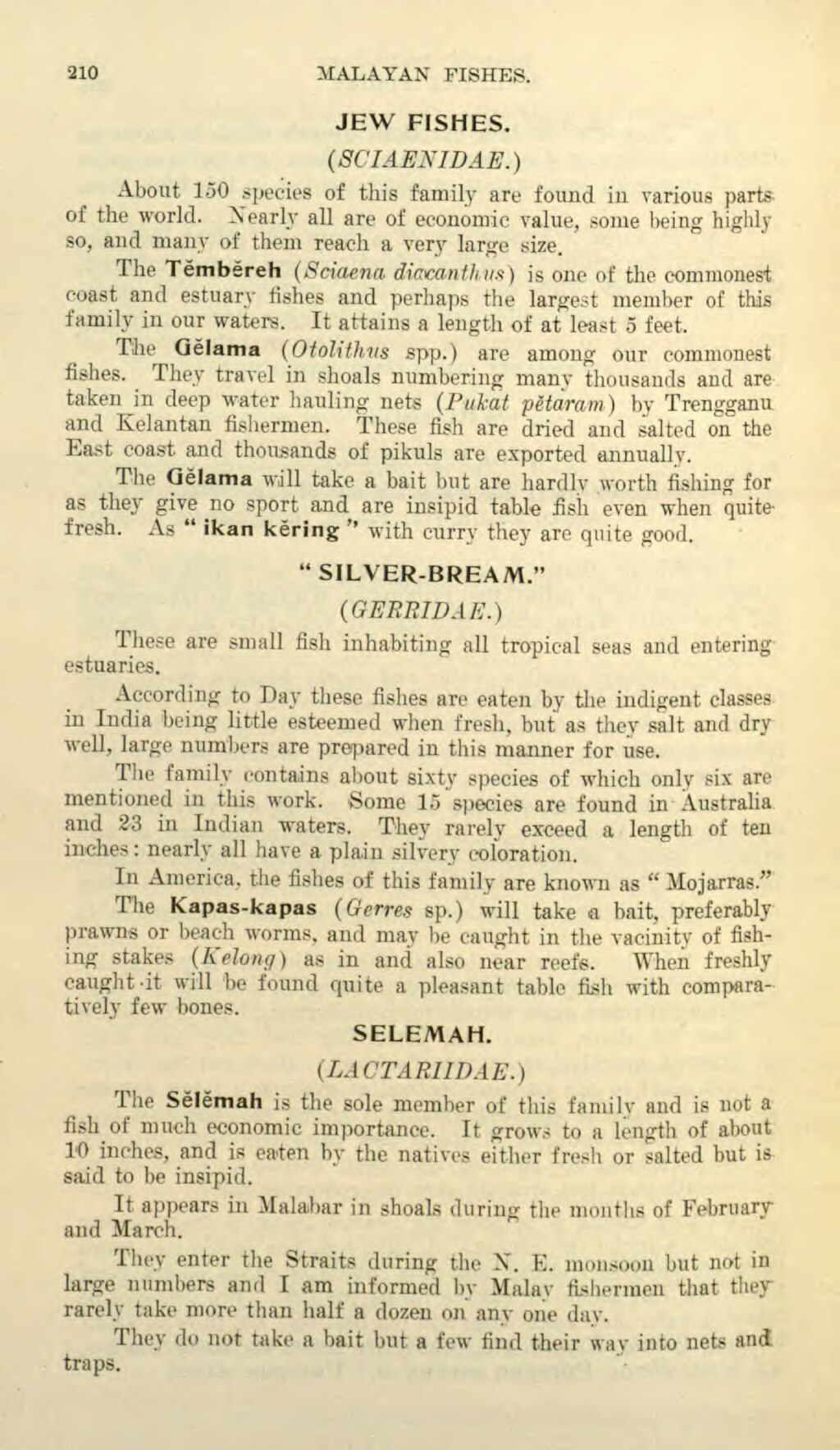JEW FISHES.
(SCIAENIDAE.)
About 150 species of this family are found in various parts of the world. Nearly all are of economic value, some being highly so, and many of them reach a very large size.
The Těmběreh (Sciaena diacanthus) is one of the commonest coast and estuary fishes and perhaps the largest member of this family in our waters. It attains a length of at least 5 feet.
The Gělama (Otolithus spp.) are among our commonest fishes. They travel in shoals numbering many thousands and are taken in deep water hauling nets (Pukat pětaram) by Trengganu and Kelantan fishermen. These fish are dried and salted on the East coast and thousands of pikuls are exported annually.
The Gĕlama will take a bait but are hardly worth fishing for as they give no sport and are insipid table fish even when quite fresh. As "ikan kĕring" with curry they are quite good.
"SILVER-BREAM."
(GERRIDAE.)
These are small fish inhabiting all tropical seas and entering estuaries.
According to Day these fishes are eaten by the indigent classes in India being little esteemed when fresh, but as they salt and dry well, large numbers are prepared in this manner for use.
The family contains about sixty species of which only six are mentioned in this work. Some 15 species are found in Australia and 23 in Indian waters. They rarely exceed a length of ten inches: nearly all have a plain silvery coloration.
In America, the fishes of this family are known as "Mojarras."
The Kapas-kapas (Gerres sp.) will take a bait, preferably prawns or beach worms, and may be caught in the vacinity of fishing stakes (Kelong) as in and also near reefs. When freshly caught it will be found quite a pleasant table fish with compara- tively few bones.
SELEMAH.
(LACTARIIDAE.)
The Sělěmah is the sole member of this family and is not a fish of much economic importance. It grows to a length of about 10 inches, and is eaten by the natives either fresh or salted but is said to be insipid.
It appears in Malabar in shoals during the months of February and March.
They enter the Straits during the N. E. monsoon but not in large numbers and I am informed by Malay fishermen that they rarely take more than half a dozen on any one day.
They do not take a bait but a few find their way into nets and traps.
